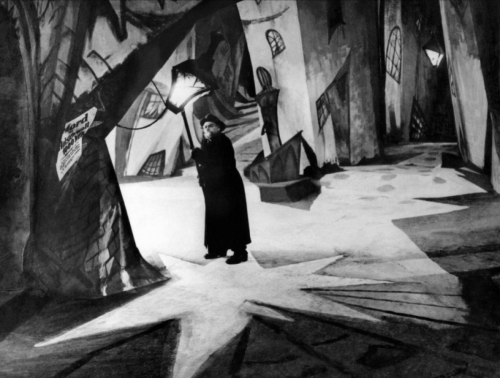
German Expressionism began before the first world war which reached a peak in Berlin during the 1920s. German expressionism had a huge field from architecture, dance, cinema, acting, painting and sculpture. This kind of expressionism is very recognisable and stylised, shown through jagged rough set designs with sharp angles, eerie effects created through shadows, silhouettes and fog. It also included isolated locations sometimes, such as a haunted house.
Some classic films from this type of expressionism include "The Student of Prague" 1913, "The Cabinet of Dr Caligari" 1920, "From Morn to Midnight" 1920 and "The Golem: How He Came into the World" 1920.
Different European cultures of the 1920s embraced an ethic of change to look to the future of cinema by experimenting. They did this by using very bold artistic styles with new un-heard of ideas.
The most common narratives in German Expressionism films were to do with unpleasant things, such as betrayal or madness triggered by world war one.
Extreme anti-realism created from such stylised films didn't last longer than a few years, apart from themes of expressionism crept into different films throughout the years and we know that these ideas were created from the German Expressionism style.
Some film examples:
"Cabinet of Dr Caligari" trailer, 1920
https://www.youtube.com/watch?v=IAtpxqajFak
"From Morn to Midnight", 1920
https://www.youtube.com/watch?v=PTHWiPWlPHg
"The Student of Prague", 1913
https://www.youtube.com/watch?v=NWycNxqotmQ
No comments:
Post a Comment